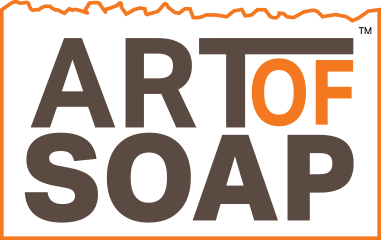Apparently, more and more people today are switching from commercial soap brands to handmade soap bars. More and more consumers now understand how commercial soaps contain toxic chemicals whose harmful impact on the skin is far more than the beautifying promises that these brands ought to make.
However, this comparison between commercial and handmade natural soap bars is no more the most significant factor in choosing the best soap for your skin. This is because just like commercial soaps, there is a high chance that your beloved handmade soap bar also contains a few ingredients that aren’t exactly skin-friendly.
Therefore, you need to have complete knowledge of ingredients to avoid in handmade soap bars as well.
For beginners, this article covers a thorough account of chemical ingredients to avoid in handmade soap bars.
I: Ingredients to avoid in your soap bar
Below is a list of a few top ingredients and reasons on why you should be careful about not having them in your handmade soap bar. So, the next time you are about to buy handmade soap, try to avoid the ones that contain any of the following ingredients.
1. Fragrance ingredient – 1, 4-Dioxane
- Let’s begin with probably the first thing that you notice in any soap bar, its fragrance.
- Believe it or not, fragrance tends to be one of the high selling points of any soap bar. However, that appealing and attention-grabbing scent might not be something that suits your body.
- For instance, one compound that is used to make fragrances in soap bars is 1, 4-Dioxane. Intake of this compound in any form whether through the eyes, nose, and mouth (throat) is known to irritate as well as cause liver and kidney disease.
- But perhaps the worst part of having to deal with the side effects of a soap’s fragrance is that most soap packaging does not specifically mention the ingredients or compounds that make its fragrance.
2. Formaldehyde
- Mostly mentioned on soap packaging as either DMDM hydantoin, imidazolidinyl urea, quaternium-15, 3 diol (Bronopol), or sodium hydroxymethylglycinate, etc. is a common ingredient in many soaps and is used as a preservative.
- Formaldehyde is a carcinogen that is known for causing neurotoxicity, developmental toxicity, and asthma.
3. Parabens
- Parabens are an important ingredient in handmade soap. It is also a preserving agent used to prolong the shelf life of the handmade soap bar.
- Although not much evidence exists on the negative impact of parabens, it is still considered harmful. Some research has found its ability to penetrate through the skin and remain in the body, thus causing behavioral changes to the hormone systems.
4. Sodium Lauryl Sulphate (SLS)
- Ever wondered what causes so much lather when you rub the soap, well it is this chemical called Sodium Lauryl Sulphate or SLS. And while we all love a rich and thick lather-making handmade soap bar, the intense toxicity of the SLS is known to irritate the skin, eyes, and even a few internal organs of your body.
5. Triclosan
- Although banned for use in personal care products including soaps, Triclosan is still found in many products for its antibacterial and antifungal properties.
- The reason behind its ban is its negative impact on the immune system and cardiovascular function, as well as causing symptoms of allergy and asthma.
II: How to spot soap bars with any toxic and harmful ingredients
The soap bar section of every supermarket and store has tons of variety to choose from, making it quite difficult to even spot the right one. But while it may not be possible to find the perfect and completely toxic-free natural soap bar, you can still try a few things to find the handmade soap bar with minimum harmful ingredients.
- Always start with the ingredients. Memorize a few of the most toxic chemicals and their probable names by which their identity is often concealed by makers of handmade soap bars.
- Another thing to look out for is palm oil or any of its derivative products that may be mentioned with different names. Avoid these soap bars as well.
- Prefer soap bars containing natural fats as they are skin-friendly and can treat several skin issues. Contrary to this, processed oils aren’t skin-friendly and can cause adverse effects on the skin.
- Check for the processing method involved in the making of the handmade soap bar. Buy soaps whose label mentions cold or hot-pressed instead of buying the ones made through melting and pouring techniques.
III: Benefits of natural soap
Want to know why handmade natural soap bars are fast becoming a trend. Well, here is why –
- Natural soap bars have glycerin, which helps in keeping the skin moisturized.
- Compared with commercial soap bars, natural soap bars boast high reliability with regards to containing ingredients that aren’t harsh on the skin.
- When you buy a natural handmade soap bar, you are encouraging manufacturing techniques that are cruelty-free and animal-friendly.
- Handmade natural soap bars come in a wide variety of colors, textures, scents, shapes, and sizes.
- Ingredients used in natural soaps are easy on the environment as well since the soapy water that goes down the drain is free from toxic waste.
Shop with Art of Soaps today for premium, custom handmade soap bar products!

